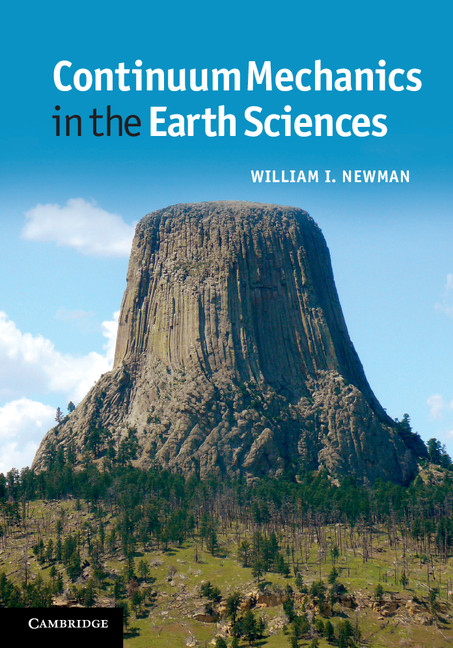This week’s guest post introduces a book recently published by Cambridge University Press.
Written by William I. Newman, a Professor at the University of California, Los Angeles, Continuum Mechanics in the Earth Sciences provides an introduction to continuum mechanics and essential mathematical and physical approaches in the Earth sciences. It also contains problem sets and worked examples, altogether providing a valuable first step towards understanding continuum mechanics, related tensor notation, and mathematical-background concepts. Clearly structured and merging basic with advanced topics, this textbook will capture the attention of both expert researchers and beginners in the area.
Hardback; ISBN: 9780521562898; Publication date: March 2012; 194 pages; Price: £40 (~€50)
The text is divided into nine main chapters, with the first three covering geometrical definitions of the material body and the response of materials under different forces. These definitions start with a review of essential mathematics for continuum problems, with the purpose of their geometrical descriptions in addition to covering rotation, transformation, and kinematics. The text continues, mainly in Chapter 2, by covering the most important physical quantities in continuum mechanics, like temperature, force, and stress.
The fourth chapter is devoted to fundamental laws and equations. This part of the text starts by introducing new terminology and is followed by the derivation of conservation laws. The following subsections cover some well-known constitutive equations, describing the internal mechanical, thermal, and other properties, of the constitutive quantities of the continuum materials. These parts are followed by thermodynamic considerations, which play a key role in the geosciences, particularly in the context of flows in Earth materials where the temperature can undergo dramatic change.
Chapter 5 is dedicated to linear elastic solids. It defines a body of material as elastic if at each body point the strain is a one-to-one function of stress at that point regardless of its history of loading. This chapter continues with discussions on statics and dynamical equations of isotropic bodies, homogeneous deformation equations, and the role of temperature on body deformation. It ends with a quick review on microscopic structure of crystals and their behaviour.
The next two chapters, on classical fluids and geophysical fluid dynamics, discuss the motion of fluids and their behaviour under stationary and dynamic inertial environments. Examples include the interior of Earth as well as the motion of the oceans and atmospheres.
The book ends with two chapters covering computations in continuum mechanics and nonlinearity in the Earth. The first one deals with partial differential equations used in numerical methods with the purpose of solving complicated real-word problems of continuum bodies rather than using simplified and linearized solutions.
Finally, the last chapter starts with some comments on the role of nonlinearity and its manifestation in the Earth sciences and continues by reviewing both friction, as the oldest mechanical aspect, and fracture, as one of the most challenging aspects of continuum mechanics. The last subsections cover percolation models, used to demonstrate self-organization under specific conditions, as well as fractals, used for the generation of noticeably realistic details of the objects.
Although on the whole an informative volume, this book unfortunately does not provide sufficient rigorous examples to work with, as is common in other continuum mechanics books. In addition, more examples about applications of continuum mechanics into real life Earth science problems could have made the book a little more interesting for student readers even in other fields within engineering.
By Arash Maghsoudloo, Research Assistant at Middle East Technical University

